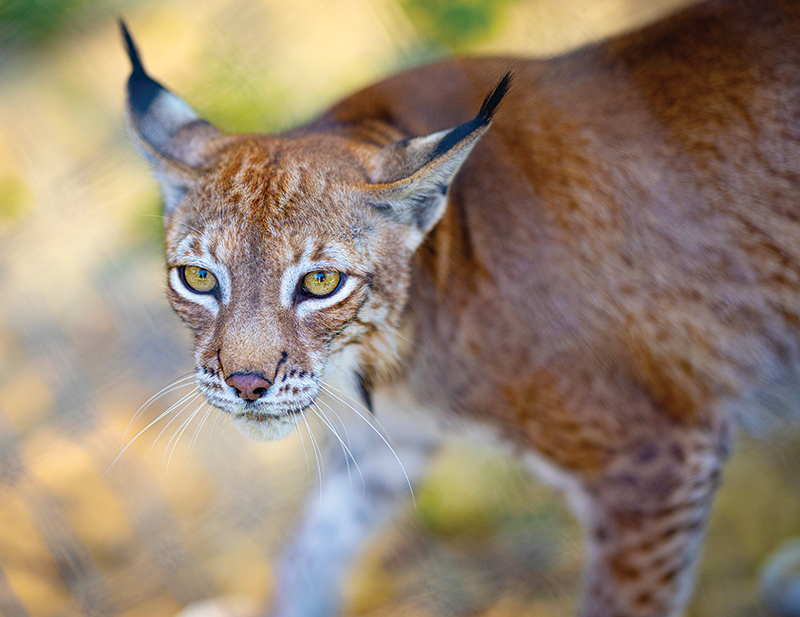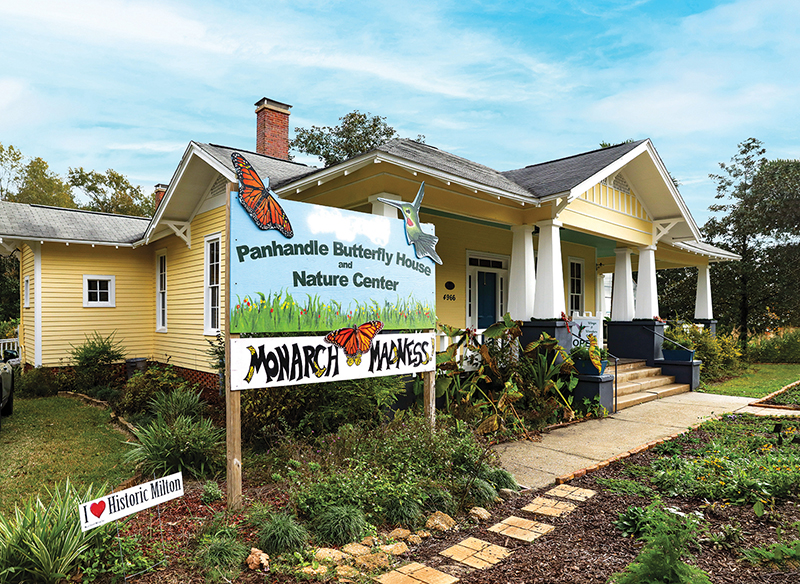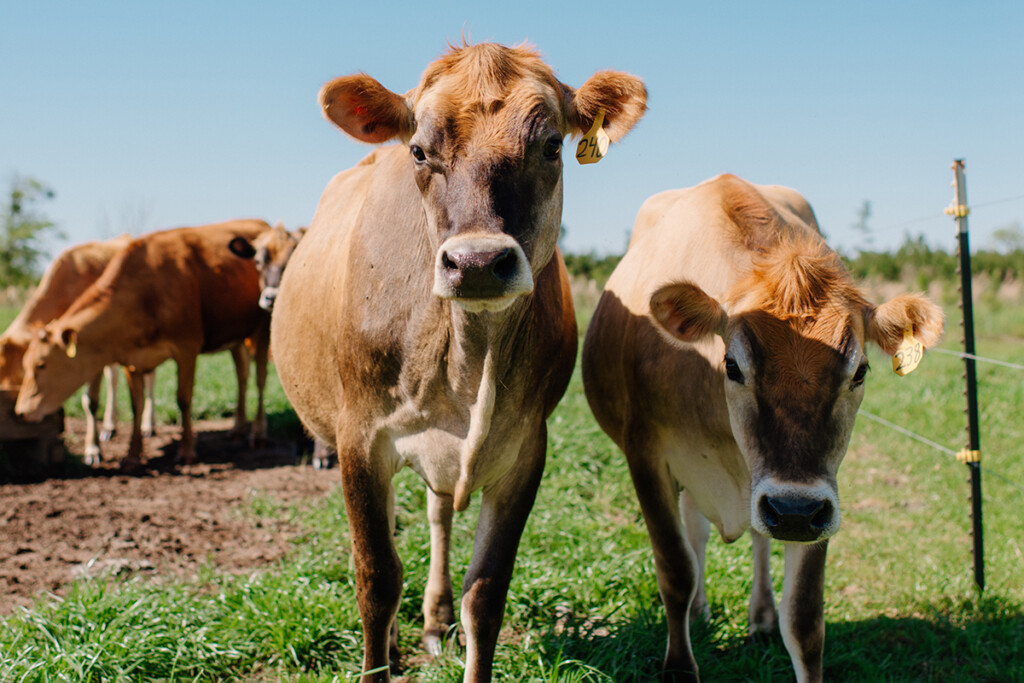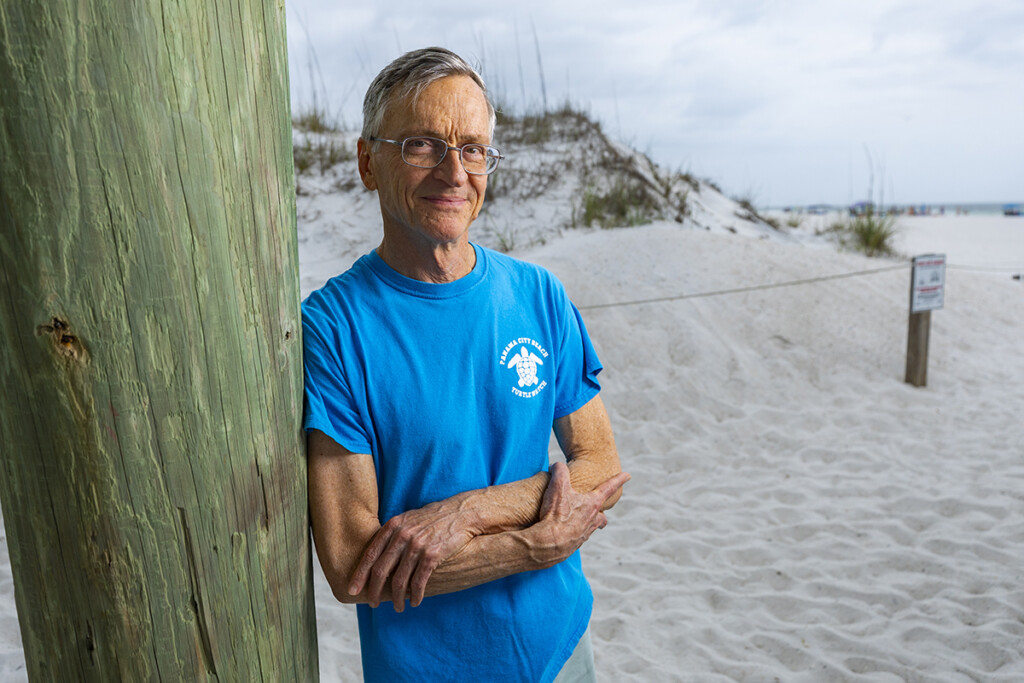A Good Forever Home
Big cats find sanctuary at Bear Creek Feline Center

The mountain lions stir with a low rumble as they rise to be fed.
The big animals gently accept their meals and eat in a way that seems delicate, until you hear the crunch of bones between their powerful jaws.
“Gentle, gentle,” the tour guide calls to the animals as she feeds a puma named Saint, who is positioned in an overhead walkway where he can easily be seen by visitors. “That word makes a big difference.”
The Bear Creek Feline Center (BCFC) is a big cat sanctuary that cares for mountain lions, servals, jaguarundis and more. It works closely with the Florida Fish and Wildlife Conservation Commission to provide a permanent residence for wildcats, many of which were once kept as pets or used as feline celebrities. Others may have been struck by cars and sustained injuries that prevent them from being returned to the wild.
The 20 wildcats residing at BCFC are well cared for and well fed. “Round is a shape,” said Bertie Broaddus, wife of sanctuary founder Jim Broaddus, using a phrase intended to mean that there’s nothing wrong with a fat cat.

Staff member Jared Williams feeds Sheena, an African serval at the Bear Creek Feline Sanctuary. Like many cats, the serval is able to purr and may at times cackle, growl and grunt. In the wild, it preys on rats, small birds, hares, frogs, insects and reptiles. Photography by Mike Fender
I had arrived at the sanctuary about the same time that the Ferlock family of Houston did. Tripadvisor lists the sanctuary as No. 1 on its list of things to do in Panama City, and the Ferlocks’ trip to BCFC provided them sanctuary from the scorching sun and blistering sand.
Bertie explained her role as tour guide and our responsibilities as interns.
“BCFC is not a zoo, so we don’t offer tours,” she explained. “Today, you are all interns on an educational adventure.”
We were warned to keep our fingers out of cages. “They look like little meat sticks to munch on,” Bertie said. She asked that we call out “Mistake!” if we saw anyone, even owner Jim, violate the finger rule.
“We’ve not had a guest get scratched in more than 20 years,” Jim boasted.

Dani California, a Florida panther, eyes her food at the Bear Creek Feline Center, a sanctuary where big cats, including mountain lions, servals and jaguarundis, are cared for. Photography by Mike Fender
Bertie led us to cats, some of which we fed and others that we petted.
We stopped at a cluster of habitats containing four big cats in the puma family: Saint, Takota, Marilyn and Thatcher. Bertie and a couple of volunteers prepared metal bowls filled to suit carnivores. A few chicken legs and some steaks made for Saint’s breakfast.
“This is just a morning snack,” Bertie said. “They eat high quality meat that is USDA certified. Collectively, our cats go through about $400 of the stuff every week.”
Saint and Takota are brother mountain lions and retired celebrities. Having served at the start of their lives as ambassadors, they never learned necessary skills to hunt and survive in the wild.
We moved to the next section of habitats, home to the bobcats and one serval. Bertie explained that one of the bobcats would likely remain hidden during our visit. He had been run over along the highway and needed emergency surgery to salvage his hind legs.
Next door was a bobcat that had been smuggled in a pillowcase as an infant to become a pet and was kept in a windowless basement for years. Despite access to a large habitat, she preferred the security of hiding under her raised bed.
A small, enclosed and air-conditioned space made a comfortable home for the jaguarundi, which was about the size of a house cat. She hissed and did her best to make herself appear threatening to our group. We were invited to enter the enclosure, one or two at a time, to observe her.
Bertie explained that jaguarundis are not often interested in physical contact, but this one did allow a sanctuary volunteer to approach and eventually even pet her — a rare experience.
Finally, we were invited inside for coffee and cookies. I enjoyed my share, remembering to be “gentle, gentle” as I ate.
In a den area with a couch, bean bag chair and recliner, Athena, a dog-sized serval, mingled with the guest interns. Unlike the jaguarundi, she was accustomed to the affection we offered and even willing to return it.

Jim, whose background includes years spent in radio, explained that BCFC obtained sanctuary status from the state of Florida in 2021, making it one of only nine such facilities in the state.
Because of the development boom in Panama City, Jim anticipates that the number of wildcat-to-human interactions will grow. He said anyone encountering a wildcat should back away while facing the animal and give BCFC a call.
The BCFC relies entirely on donations, grants and the work of volunteers. Most volunteers help out purely because they love animals, but some are there to earn hours toward their own license to care for wildcats.
“When I get a grant, a big donation, it goes right into this place,” Jim said. “It goes to the cats.”
I fell in love with the center during my visit. We discussed ways to help get the word out about its work and to increase visibility with potential donors. A livestream feed originating at the habitats may be a way to help raise the nearly $3,000 a month required to care for the 20 cats.
I look forward to returning as a volunteering intern in the near future.


